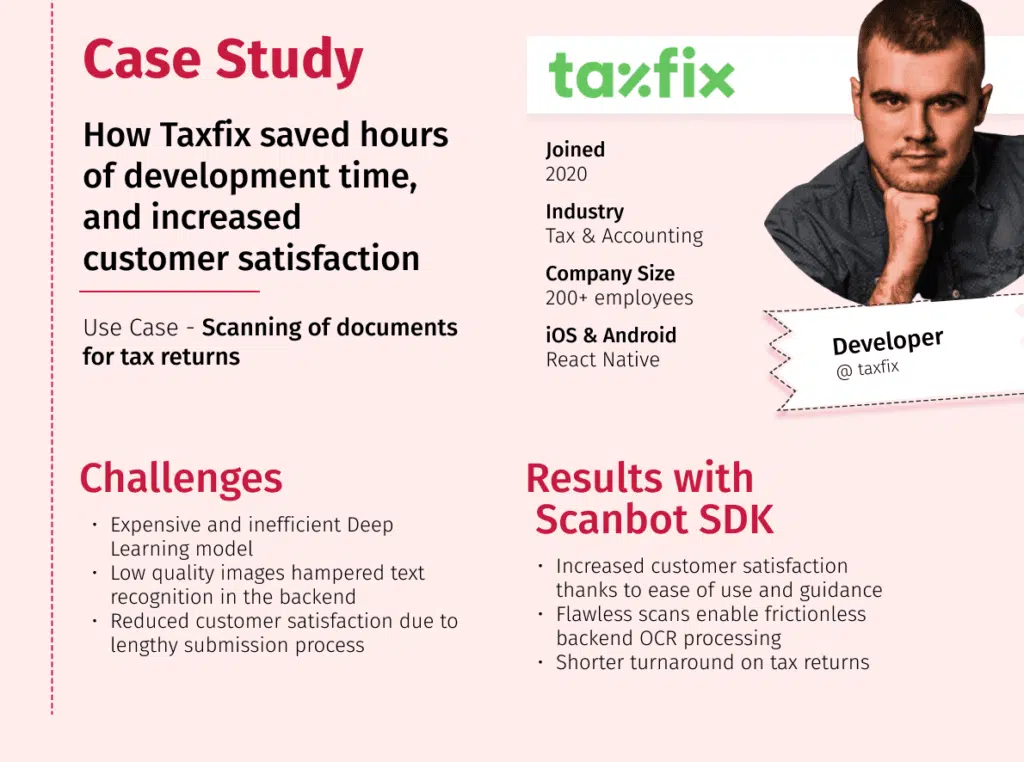Especially in the finance industry, paper-based processes are still the norm. Automating the processing of invoices, receipts, or checks requires high-quality digital copies of said documents that app users can submit to the back end in real time. In years of working with clients in the finance industry, we have gained insights into how companies can use the Scanbot Document Scanner and OCR SDK to the best effect. Let’s dive into the essential best practices that will elevate your workflows to a new standard.
Recommendations for a flawless scanning experience
Integrating a Document Scanner SDK into a mobile app follows one overall goal – achieving a high automated processing rate. To enable flawless back-end operations and a smooth user experience simultaneously, finance enterprises should consider the following recommendations that we could gather from close collaboration with industry experts.
Automatic capture vs manual capture
To improve your users’ experience, you may want to enable automatic capture: When conditions are good, the Auto Snapping feature will automatically scan detected documents. You can specify the sensitivity for this as a value from 0 to 1, though commonly used values range from 0.66 to 0.8.
Blur estimator
This feature checks how blurry the photo taken by the customer is and whether it should be retaken. This helps to ensure that your customers only submit high quality scans. You can adjust the retake threshold to suit the needs of your backend, though we recommend a value of 0.5.
Filters
If your backend solution requires images that are already binarized, you can enable one of our binarization filters. Alternatively, the SDK can apply a grayscale filter.
Please note that any filter you choose must be appropriate for your backend solution, especially as some backend systems apply their own custom filters.
Cropping screen
In good scanning conditions, the SDK will automatically capture, adjust, and crop document pictures. When conditions are poor, however, users have to perform these steps manually. By implementing a cropping screen, your customers can improve the image’s quality by rotating and cropping it. This means less manual checking on your end.
Backend configuration
For perfect results from start to finish, your front- and backend have to be aligned. The documents created with the Scanbot SDK must be suitable for processing in your backend. Using the appropriate format and filtering options is particularly important. This is especially important for backend OCR processing.
Since there are many backend solutions on the market, we do not offer a one-size-fits-all solution. However, here are a few important points to look out for:
- Which file format does your backend expect? (TIFF, PDF, JPG)
- Does your backend apply an image filter to incoming documents or does it require the image to be filtered? Filtering a document twice will compromise the results.
- Does it require a certain minimum or maximum resolution? You may need to downscale the documents.
Let’s get practical with an example use case from German start up Taxfix

OCR Scanning with Scanbot SDK
While taking the perfect scan is the key component of achieving perfect OCR results, these additional suggestions will help you improve the performance even further.
Languages
You can use multiple languages for OCR. But since the recognition of characters and words is a very complicated process, increasing the number of languages lowers the overall precision. With more languages, there are more words that the detected characters could match. We suggest using as few languages as possible. Make sure that the language you are trying to detect is supported by the SDK.
Typefaces
The OCR trained data is optimized for common serif and sans-serif font types. Decorative or script fonts drastically decrease the recognition accuracy. It is recommended to ensure that documents used follow these common font types.
Would you like to add mobile Document Scanning to your workflow? Contact our solution experts now. We are looking forward to discussing your particular requirements.







